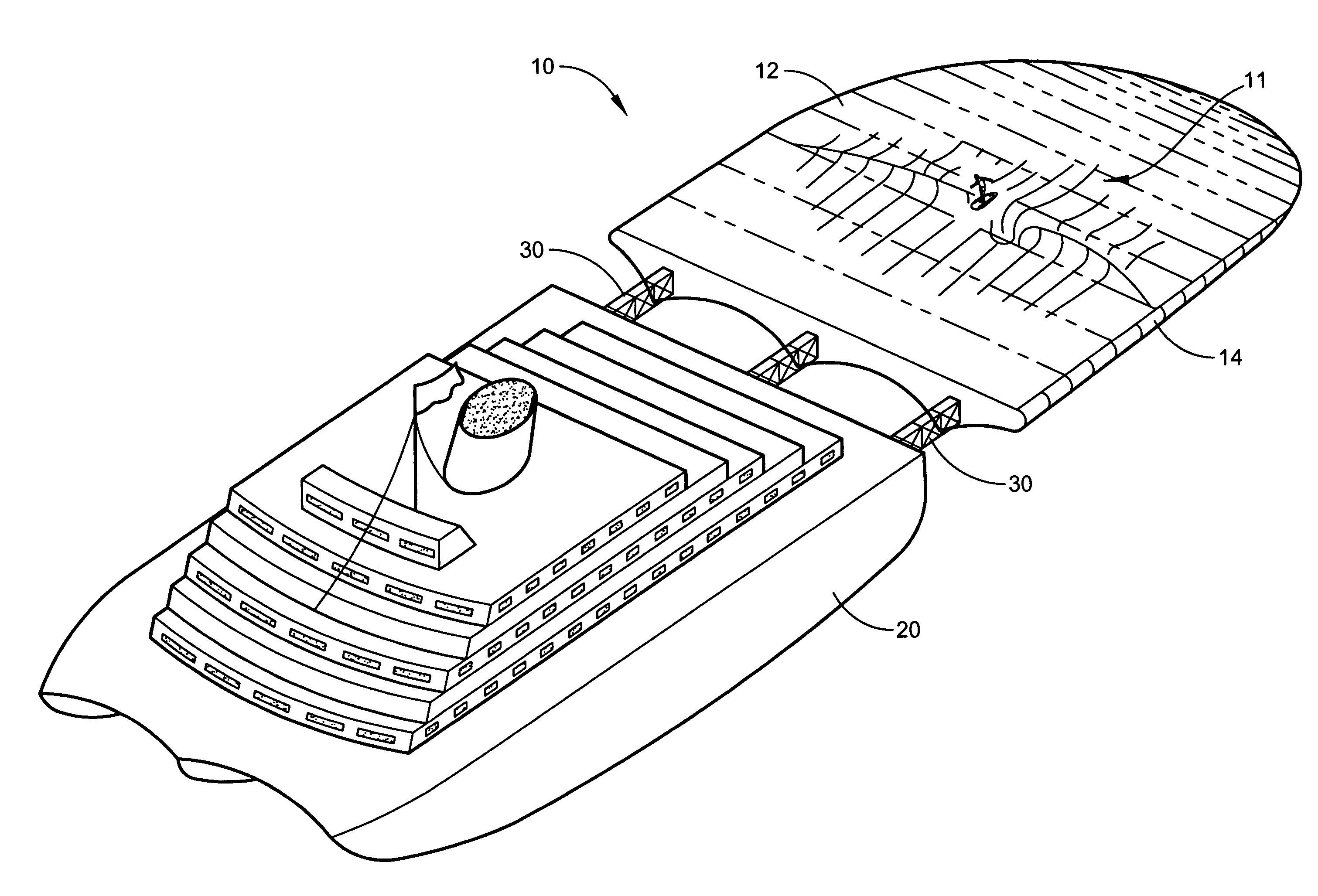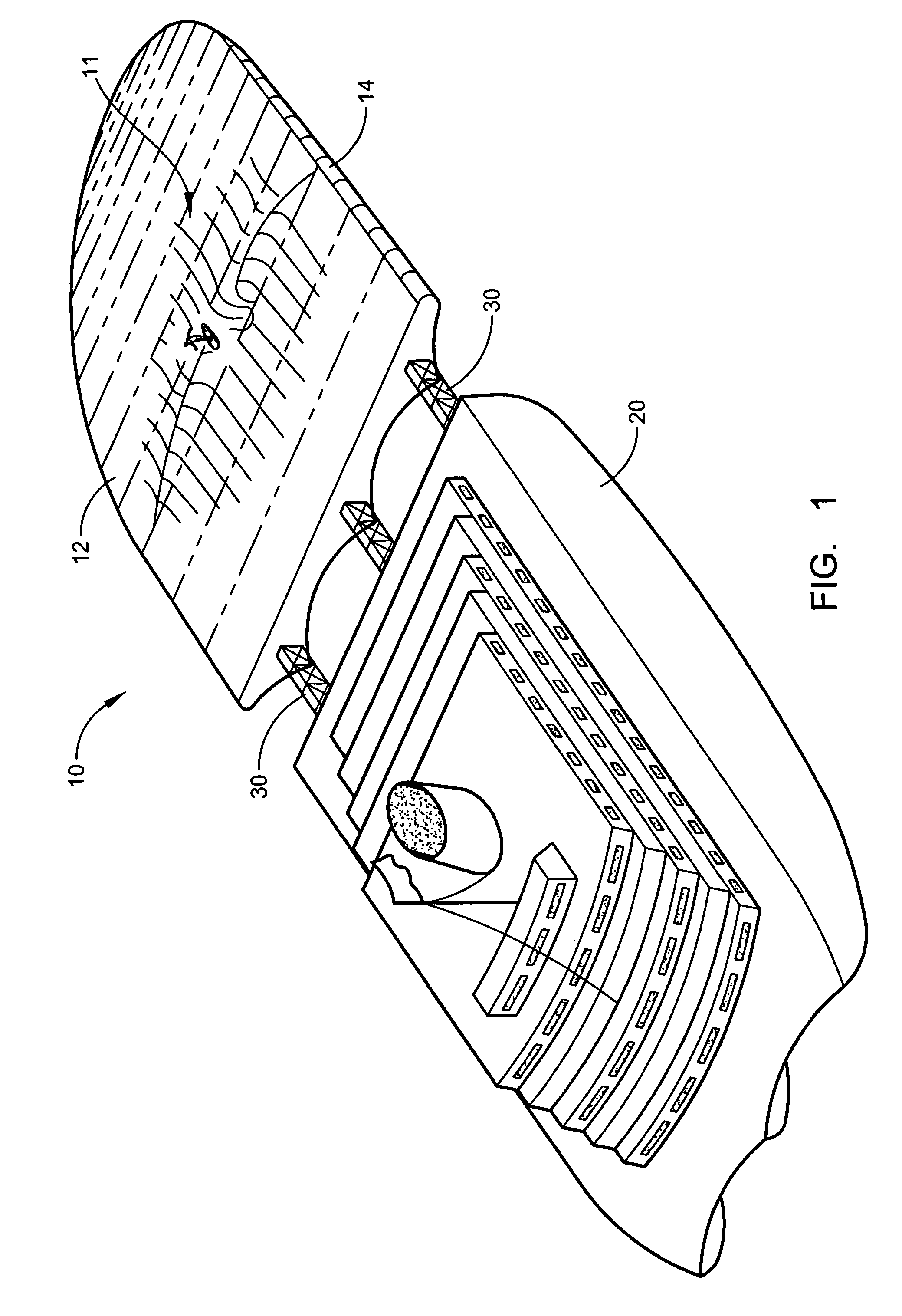Floating oceanic surfing reef
a technology reefs, which is applied in the field of floating oceanic reefs, can solve the problems of affecting the quality of surfing experience, and affecting the surfing experience of the place offering such waves,
- Summary
- Abstract
- Description
- Claims
- Application Information
AI Technical Summary
Benefits of technology
Problems solved by technology
Method used
Image
Examples
Embodiment Construction
[0034]Referring now to the drawings, wherein similar parts are identified by like reference numerals, there is seen in FIG. 1 a perspective view of the floating oceanic surfing reef 10 attached to a master vessel 20 by control arms 30. The optimum dimensions of floating oceanic surfing reef 10 to produce waves with desirable characteristics are 480 feet in length and 360 feet in width. At these dimensions, floating oceanic surfing reef 10 can transform free ocean wave energy into waves 11 with 20 foot faces and 15 second periods. It is to be understood that the dimensions of floating oceanic surfing reef 10 can be varied to produce waves with certain specific characteristics, such as favoring either a right or left shoulder, as would be recognized by one with ordinary skill in the art. These dimensions can range upward from 125 feet in length and 100 feet in width, as long as the length is approximately 25% larger than the size of the width. Floating oceanic surfing reef 10 is prefe...
PUM
 Login to View More
Login to View More Abstract
Description
Claims
Application Information
 Login to View More
Login to View More - R&D
- Intellectual Property
- Life Sciences
- Materials
- Tech Scout
- Unparalleled Data Quality
- Higher Quality Content
- 60% Fewer Hallucinations
Browse by: Latest US Patents, China's latest patents, Technical Efficacy Thesaurus, Application Domain, Technology Topic, Popular Technical Reports.
© 2025 PatSnap. All rights reserved.Legal|Privacy policy|Modern Slavery Act Transparency Statement|Sitemap|About US| Contact US: help@patsnap.com



